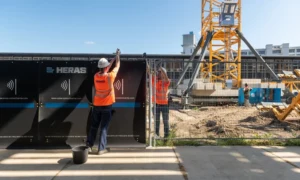“You can build your own house, or buy one that’s already built. Both have their advantages.”
Restaurant ordering and delivery systems have become indispensable in today’s digital era. Online and mobile ordering gives customers convenience and drives revenue for restaurants. Having an efficient delivery operation also expands your reach. So every restaurant needs a restaurant management system tuned to their needs.
But should you build your own system in-house, or buy an off-the-shelf product? There are good arguments on both sides. We’ll analyze the key pros and cons of building vs buying, to help you make the best decision for your restaurant.
Building Your Own System
Developing your own customized online ordering and delivery platform gives you the most control – but requires more effort upfront.
Building everything in-house lets you create exact features and workflows for your restaurant’s concept and menu. You can start simple and add capabilities over time, without paying recurring fees. Once built, your system can last for years with proper maintenance. And you own the technology, avoiding dependency on vendors.
Total control and customization – build exactly what you need
With a fully customized system, every part is tailored for you. The ordering process reflects your menu and upselling tactics. Delivery mapping and dispatching optimize your geographic footprint. Kitchen workflow and POS integration streamline operations. You build what you need, avoiding generic software that may not fit right.
Integrates closely with your existing systems
A homegrown system can deeply integrate with your current tech stack – from your POS and inventory to your HR and CRM systems. Vendor systems often have integration limits or require custom development add-ons. Building your own allows tight connections across all back-end software, with data flowing seamlessly.
Can start simple and add features over time
Beginning with a basic but functional online ordering portal allows testing the concept before committing to full development. Once traction is proven, you can add menu management, payment processing, driver scheduling, and other advanced capabilities. Building up your platform in phases lets it grow with your business needs.
Potentially cheaper long-term
Although initial development costs are high, a custom system can save money over years of paying monthly fees for vendor software. Once your platform is built, maintaining it costs less than recurring licensing or subscription payments. And there’s no risk of price hikes from software vendors down the road.
Cons of Building In-House
However, developing your own delivery system has downsides to weigh. It takes expertise, months of work, ongoing maintenance, and lacks readymade features.
High upfront development costs
Designing and developing a custom online ordering system requires an intensive initial investment. You need developer salaries over multiple months, designer fees, project management, etc. With a vendor platform, you only pay a one-time setup fee plus monthly services.
Complex, time-intensive process
From planning scopes to QA testing, building software entails many complex steps. You’ll need a detailed requirements doc, UX design, coding, debugging, and thorough testing. The process takes considerable time before you have a finished product ready to launch.
Need in-house expertise in software development
To build and maintain a custom system, you need experienced software architects, developers, and QA analysts on staff. That level of specialized talent is costly to hire and retain. Non-technical restaurants won’t have those skills in-house.
Ongoing maintenance and updates required
Once built, the system still needs upkeep like any software. Bugs must be fixed, features enhanced, and performance optimized regularly. As technology changes, things like security patches and browser/OS compatibility need addressing.
May lack features and functionality of mature turnkey systems
Vendors have vast teams constantly improving their software. Your homegrown system likely won’t match the features and depth of established turnkey platforms. You’re also responsible for building every new capability yourself.
Buying a Readymade System
Purchasing an off-the-shelf solution simplifies getting started quickly, but comes with recurring costs and dependence on the vendor.
Turnkey ordering and delivery platforms get you operational with minimal effort. But they lack customization and require ongoing payments for licensing and support.
Fast and easy implementation
Signing up for a vendor solution lets you launch your online ordering within weeks. Quick setup times let you start taking orders sooner. Pre-built apps and integrations make deployment easy vs building from zero.
Lower upfront costs
Buying software eliminates large development costs. At most, you pay a one-time setup and configuration fee. Monthly subscriptions spread out payments over time. Upgrades are also included rather than needing new custom development.
Packed with features and functionality
Established systems offer extensive capabilities out-of-the-box. Features like loyalty programs, aggregated delivery, and call center integration come pre-built. New features are constantly added for all clients to leverage.
Automatic updates and maintenance
The vendor handles all system maintenance and improvements for you. They manage bug fixes, security patches, technology upgrades, and new feature rollouts. Your team doesn’t have to maintain code and infrastructure.
Support from the vendor
You gain the support and expertise of the entire software vendor team. For technical issues or questions, you have seasoned professionals to call on for assistance – beyond just your own staff.
Focused on usability and optimization
Vendor platforms aim to maximize customer conversion and order volume through refined UX design and features. They run constant testing and optimization you’d struggle to match developing in-house.
Cons of Buying Software
Purchasing readymade software has downsides as well, including rigid design, recurring fees, and reliance on the vendor.
Less customization and control
Vendor systems offer little ability to customize features and design. You must conform to their template rather than matching your concept. Adding new capabilities requires their development roadmap.
Monthly or annual costs can add up
You must pay ongoing subscription fees and commissions on orders – they add up over years. Costs can rise when you renew contracts. With a custom system, you just pay for incremental improvements.
May include unnecessary features
Packaged software contains many pre-built features, some of which may be of little use for your restaurant’s needs. But you still pay for the whole platform and any unused capabilities.
Dependent on vendor’s updates and whims
Your roadmap and feature access are tied to the vendor’s development plan. They can discontinue features you rely on or force unwelcome changes. You have little recourse being dependent on their system.
Switching systems can be difficult
Once you’ve invested in integrating a vendor’s software, swapping to another platform is messy and costly. The process involves data migration, re-training staff, re-building integrations, etc. The vendor essentially locks you in.
Key Factors to Consider
Determining whether to build or buy depends on budget, capabilities, timeframes, and business needs.
What restaurant doesn’t want a beautifully designed online ordering system tailored specifically for their concept, with customers raving about the user experience? But practical factors make buying off-the-shelf software a safer bet for many. Evaluate your specific situation to make the right platform decision.
Budget – development costs vs recurring fees
Homegrown systems require big upfront investments but lower long-term costs. Vendor platforms are faster and cheaper to deploy but add ongoing fees. Weigh total multi-year spending for each approach.
Time to launch – how quickly do you need to be operational?
If you must get your online ordering live soon, buying software accelerates launch by months. Building your own will take considerable development and testing time first.
In-house expertise – can you support a custom built system?
Having software architects and developers on staff already makes building in-house far more feasible. Lacking technical teams makes a vendor solution the only real choice.
Customization needs – do you need specific features or workflows?
Turnkey systems are quite rigid. If your operations require niche features or unique processes, custom software may be the only way to accommodate that. Off-the-shelf can work for simpler needs.
Scalability – will you need to support added locations and volume?
A homegrown system gives you total control over enhancing capacity and performance as you grow. Vendor solutions scale well too but could incur add-on fees for expanded locations or orders.
Ease of use – how tech-savvy are your employees?
Restaurant staff often have limited tech skills. A vendor system is designed for easy use. Custom software will require more user training, without UX polish.
Features – evaluate feature sets of vendor systems
Compare what features of restaurant management software come built-in with major vendor platforms versus what you’d have to custom-develop. They may offer everything you need so you can avoid the build effort.
Vendor support & reliability – how responsive and reliable is the vendor?
Pay close attention to vendor reviews and reputation for support. You’ll depend on them completely to fix issues and answer questions. Slow or unreliable support can derail operations.
Security – how sensitive is your restaurant data?
Vendors meet typical security needs for transactions and customer data. But for very sensitive info like recipes, building in-house keeps things under your control rather than trusting a third party.
Conclusion
Building your own ordering and delivery platform or buying a readymade software solution both have pros and cons. The right choice depends on your restaurant’s budget, technical capabilities, timelines, and feature needs.
For most restaurants, going with an established vendor provides the fastest time to market and avoids large development costs. But brands with specialized needs or in-house technical teams can benefit from custom systems.
Carefully analyze your situation and priorities. Partner with the right software vendor or development team for success. Investing in the optimal ordering and delivery platform pays dividends through better customer experience and operational efficiency. Now you can weigh the build vs buy factors to make the smartest choice for powering your online ordering.









































